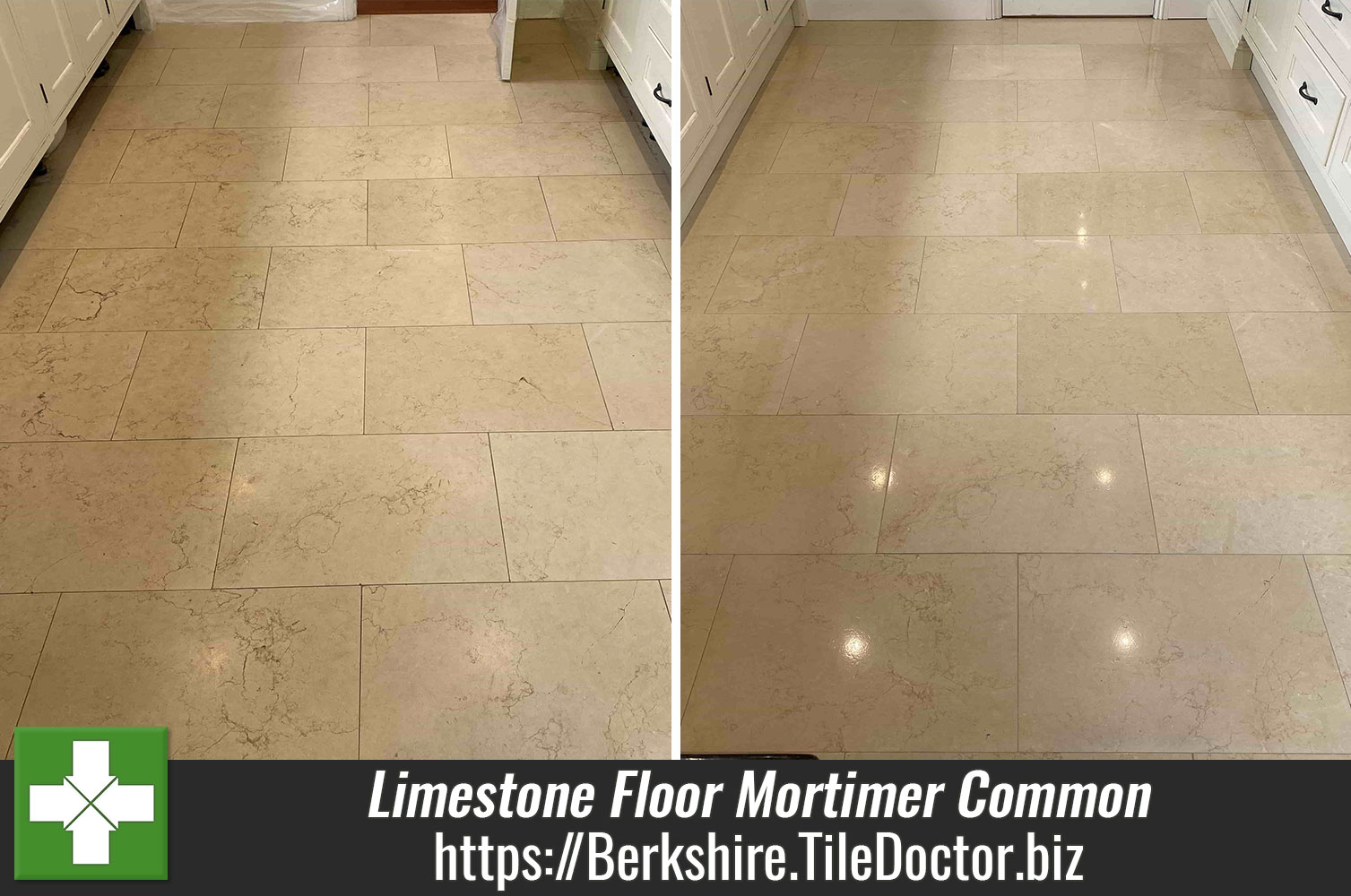Tile Doctor Remove and Go used to Remove a Topical Sealer from Jerusalem Limestone floor tiles in Reading Berkshire
I was called out to a property in Mortimer Common, which is a few miles West of Reading to survey a Jerusalem Limestone floor that had been installed quite some time ago when an extension was added to the property.
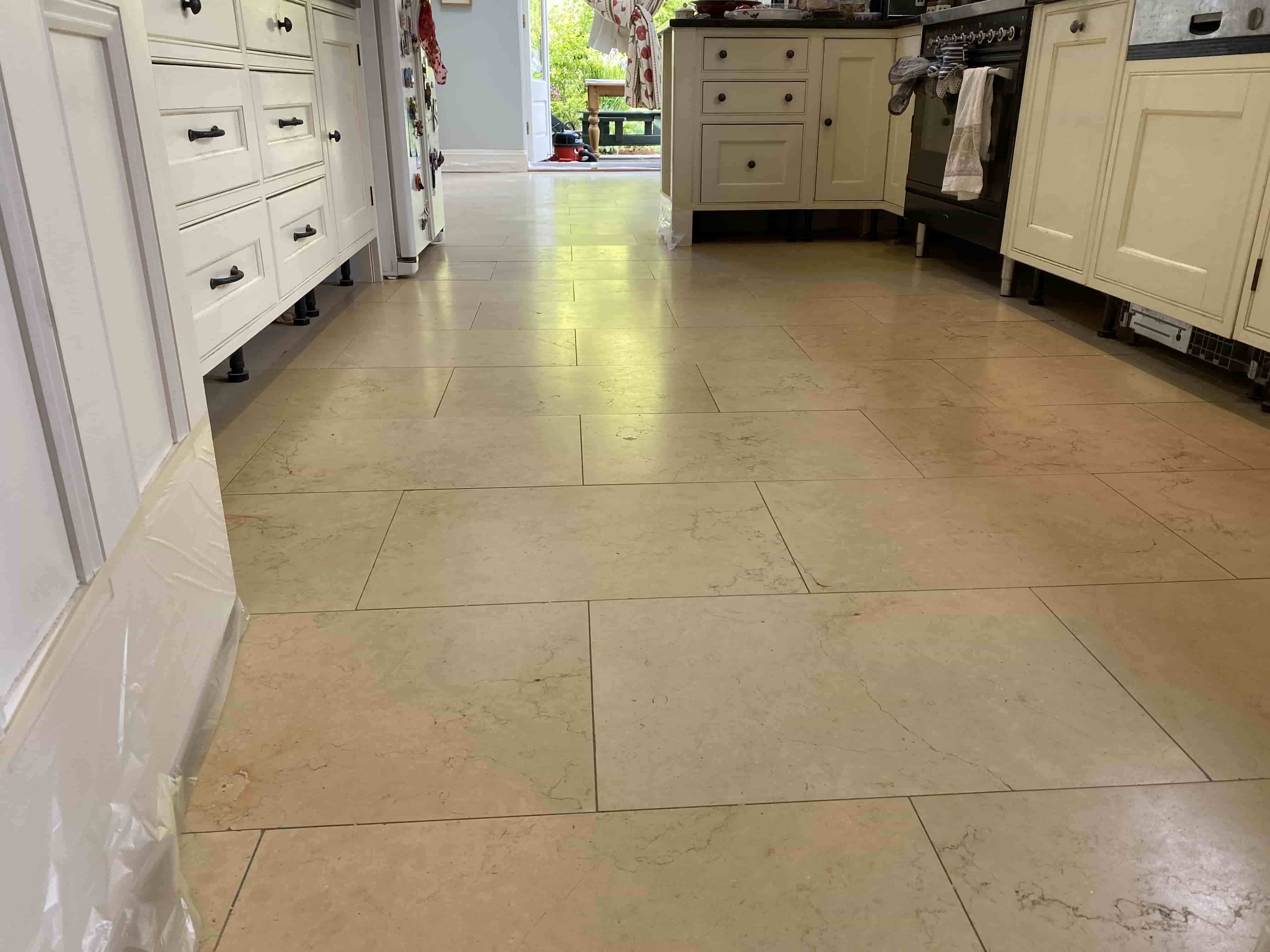
Over time their once beautiful Jerusalem limestone floor had become dirty, dull and in areas chemically damaged. In an attempt to freshen up the stone floor the customer brought some sealer from a local trade store and applied it to the floor, however the product she purchased was actually a topical sealer (Polish) which left the floor looking worse, in her words made the natural stone looking “artificial”. On very rare occasions topical sealers can be used on honed/polished floors but can easily go wrong that’s why we recommended using impregnated sealers when working on this type of material.

Limestone is also acid sensitive so best to avoid the use of strong acidic cleaning products such as bleach which will etch into the stone with use and in some cases open naturally forming cavities in the stone itself, a problem we often refer to as pitting.
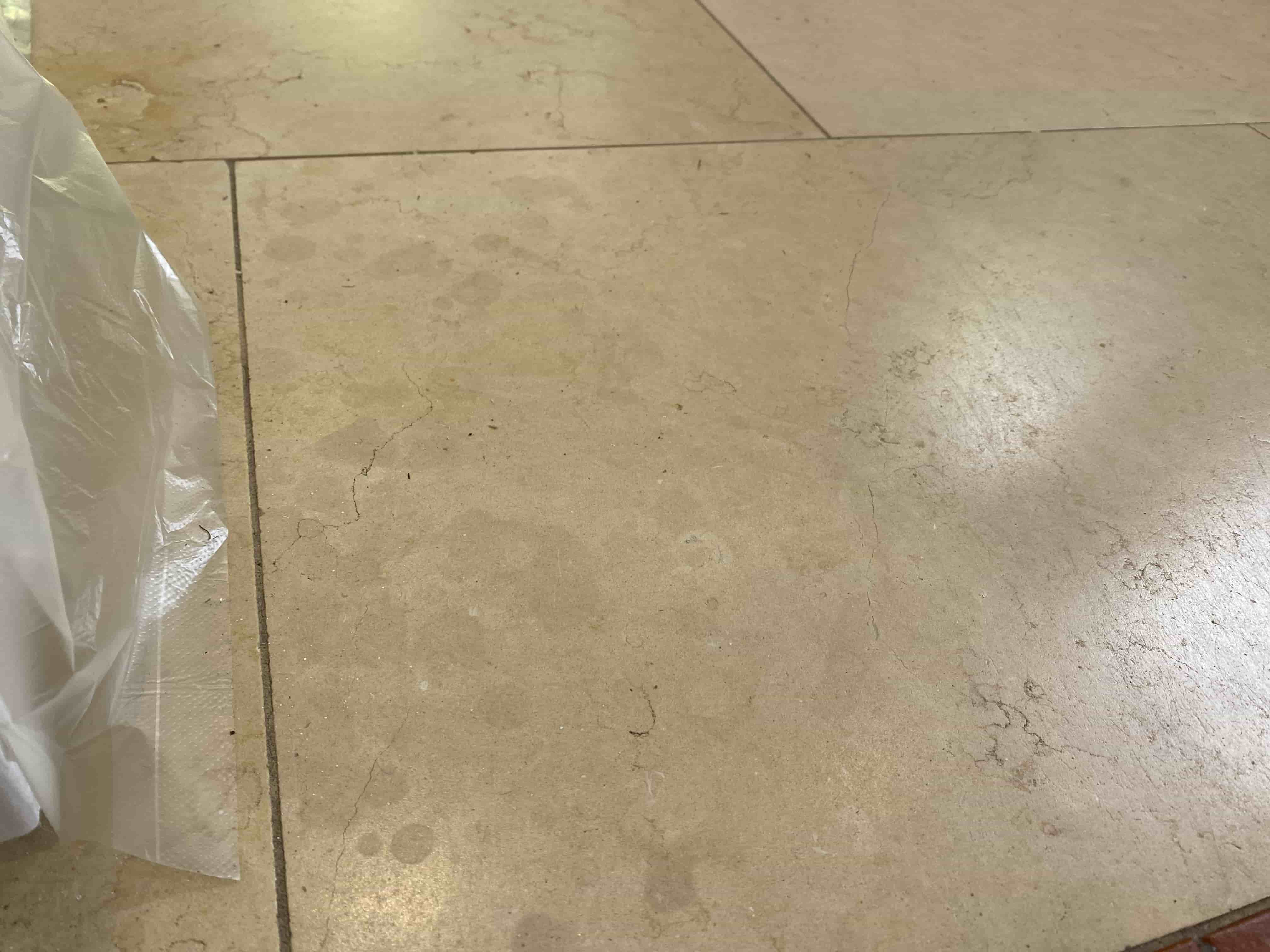
Cleaning a Jerusalem Limestone Tiled Floor
My first task was to remove the topical seal that was recently applied and deep clean the dirt filled pits and grout. To do this I used a strong dilution of Tile Doctor Remove and Go left it to soak in for ten minutes and then agitating using a combination of a stiff nylon brush and a Black stripping pad fitted to a rotary machine. I made sure to go over any pits in the stone multiple times to release the trapped dirt. The resultant slurry was vacuumed up as I went along and the floor given a rinse with water afterwards.
Once clean I addresses the small pits in some of the tiles by backfilling them with a rapid setting filling compound that I colour matched with various shades of brown and cream.
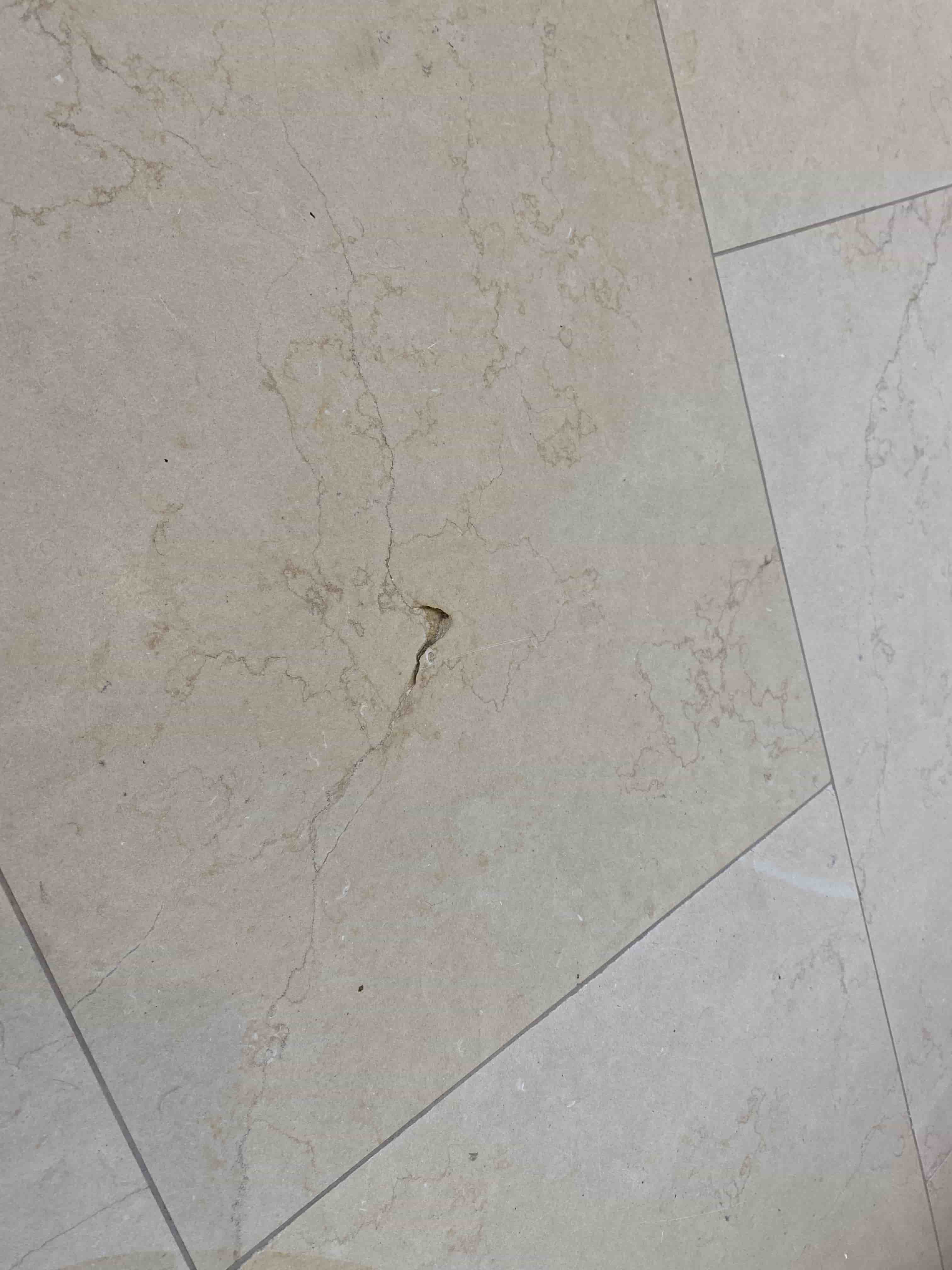 | 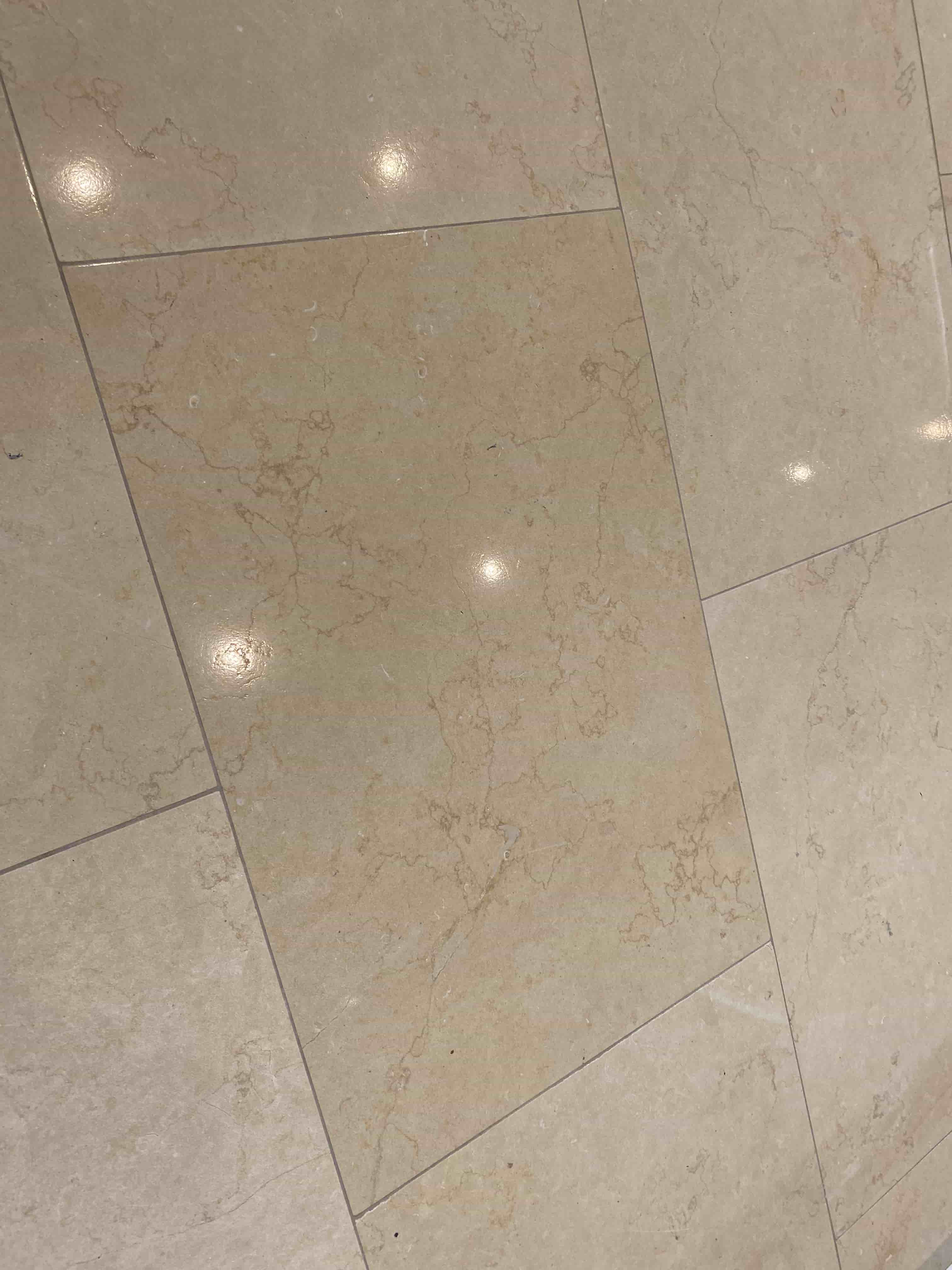 |
With the old sealer removed and the holes/pits taken care of I continued with the restoration of the floor by moving onto the burnishing process which cleans and polishes the stone. This involves honing the Limestone with a set of burnishing pads starting with a course 400-grit and finishing with a fine 3000-grit. The pads are applied to the floor with a heavy floor buffing machine using water to lubricate the process. The pad is run over each tile around five times and the chalky slurry this process generates is rinsed off afterwards with water and then extracted with a wet vacuum. You then move onto the 800-grit and then 1500-grit slowly building back the appearance of the stone.
Once each of the three pads had been run over the floor it was given a final rinse and then dried as much as possible with the wet vacuum before leaving it to dry off fully overnight.
Sealing a Jerusalem Limestone Tiled Floor
We returned to the property the following day, by which time the floor had dried completely. I finished the burnishing process with the fine 3000-grit burnishing pad which is brings up the polish even further and is only applied using a little water sprayed onto the tiles.
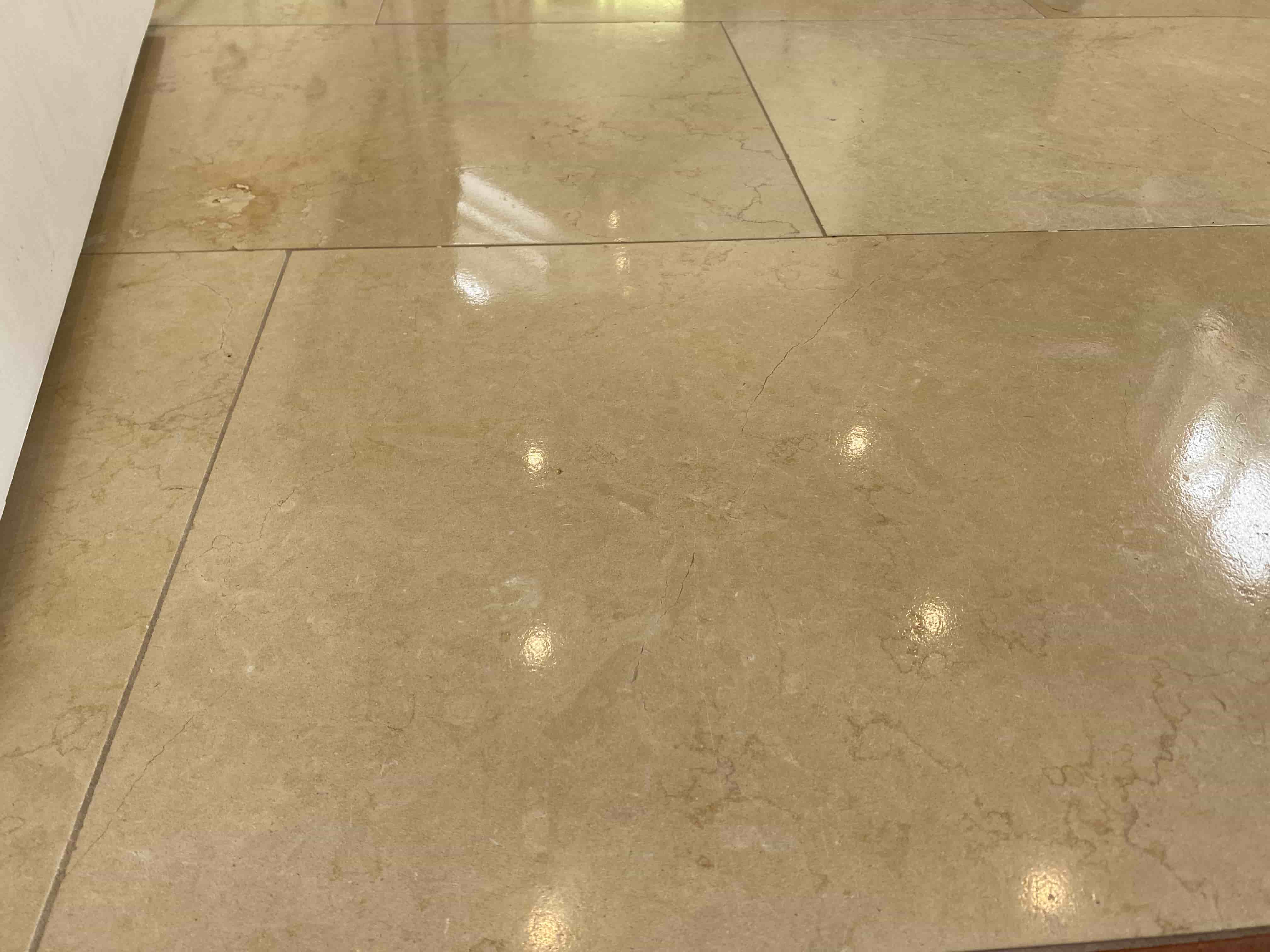
Once done I moved onto applying the sealer which for this floor, I chose Tile Doctor Colour Grow. This is an impregnating sealer that soaks into the pores of the stone to provide durable protection whilst enhancing the natural colours in the stone. The customer was over the moon with the results and was stated the floor looked better than when it was installed all those years ago.
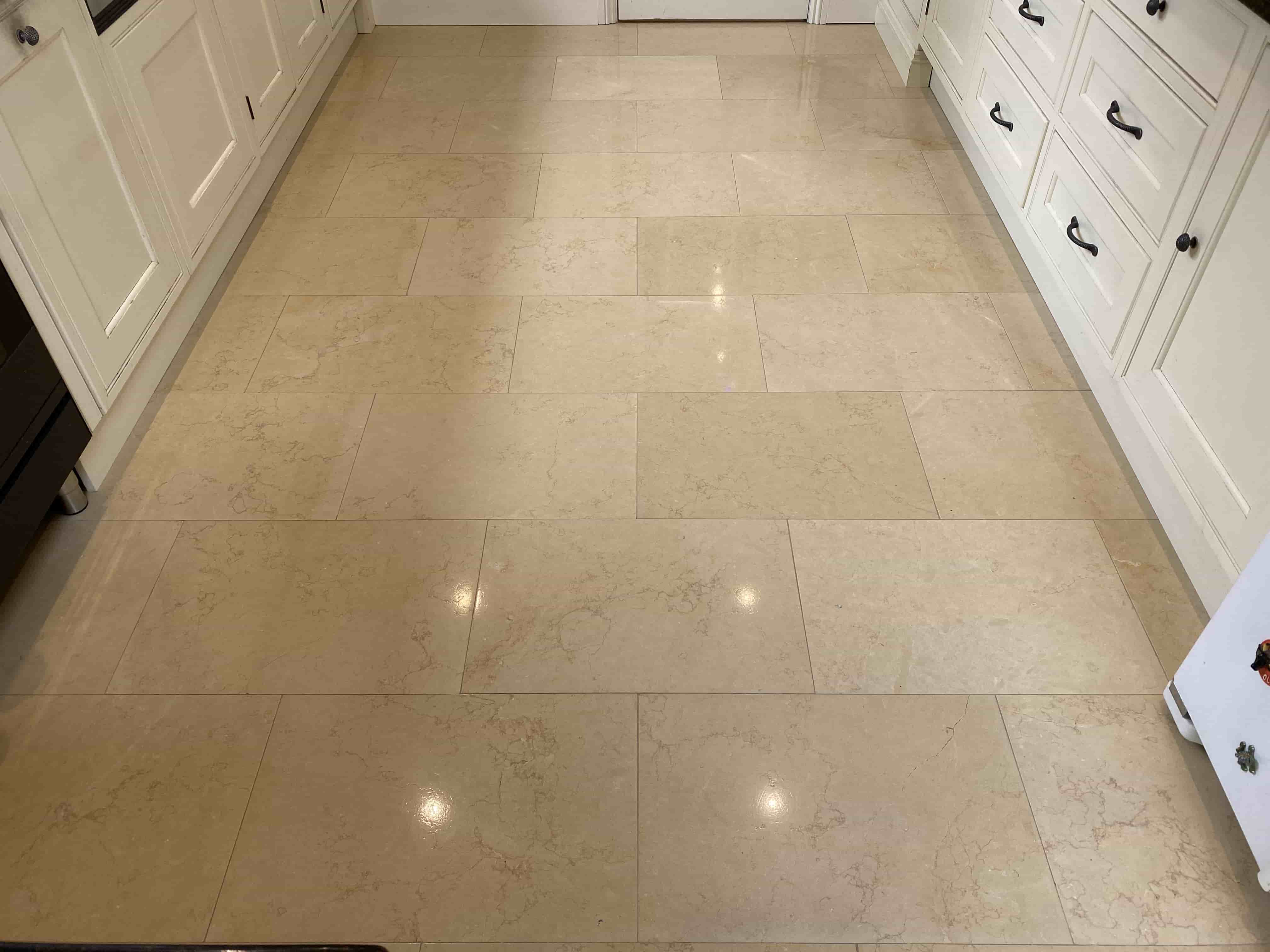
For aftercare cleaning I recommended the use of Tile Doctor Stone Soap which is designed for maintaining the patina on polished stone floors.
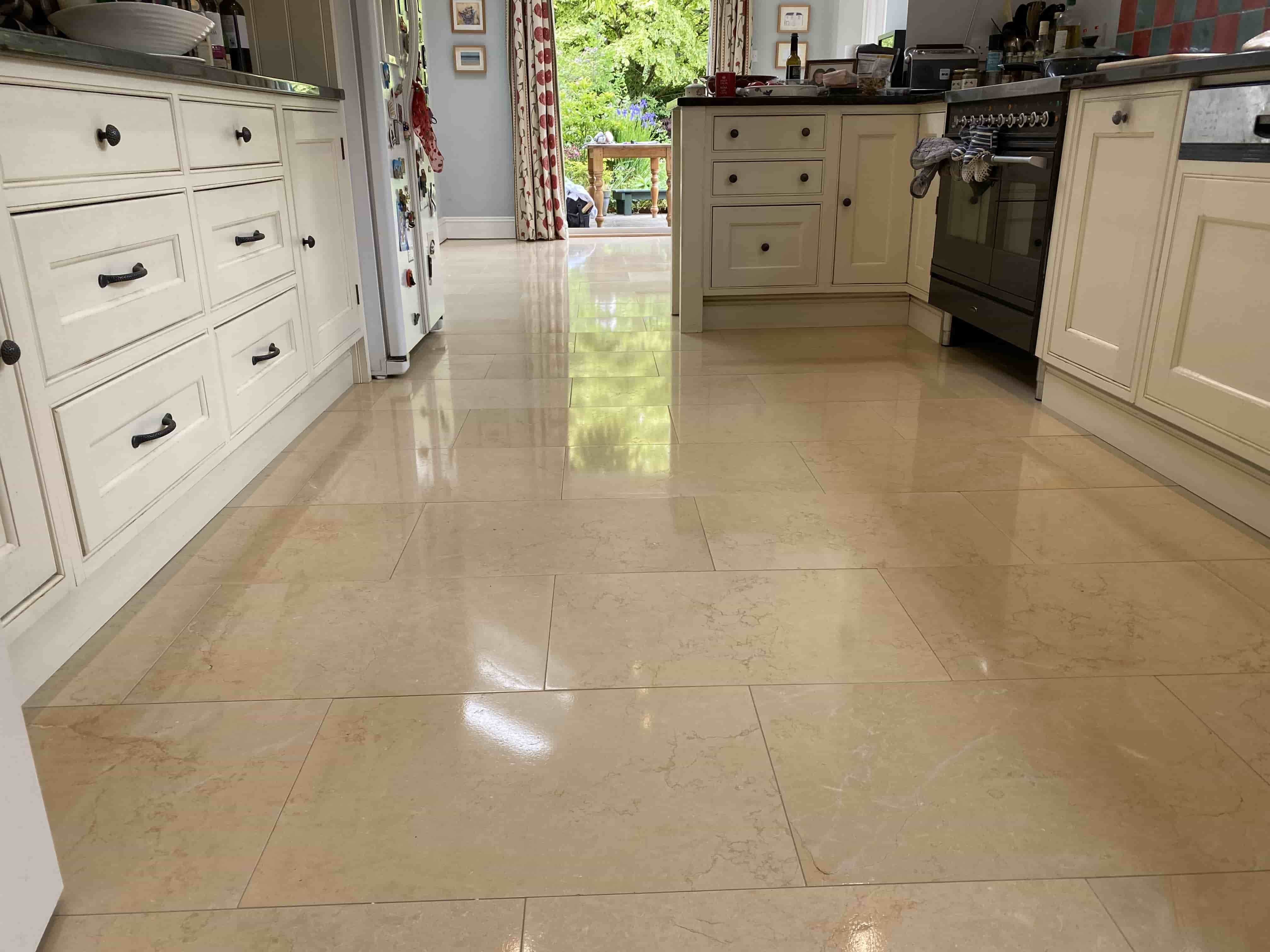
Source: Limestone Tile Restoration Products and Services in Reading Berkshire
